How to Grow Dahlias in Pots and Containers – Step-By-Step Guide
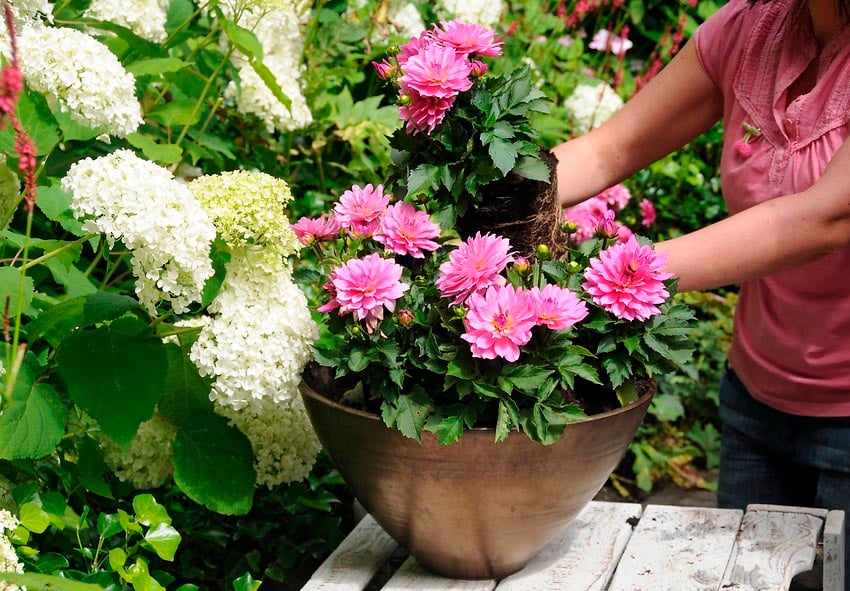
Table of Contents
Dahlias are a type of flowering plant that produces beautiful and vibrant blooms in different sizes. They belong to the family of Asteraceae, which also includes daisies and sunflowers. Dahlias are native to Mexico and Central America.
However, now they are grown in many parts of the world. These beautiful plants can be grown in gardens or in containers. They bloom in late summer and fall and come in a wide range of colours, including red, orange, yellow, and pink.
Dahlias can be grown in pots or containers, and this can be very beneficial. It allows those who have limited space to enjoy the beauty of dahlias. Container gardening allows greater control over soil quality and drainage.
These containers can be adjusted as per the requirement of sunlight and shade. You can also protect your dahlias from extreme weather conditions by shifting them indoors.
Choosing Containers for Growing Dahlias
When it comes to choosing pots or containers for growing dahlias, there are many options. You need to consider three things when choosing containers – types of containers, their size and depth, and their materials.
1. Types of Containers
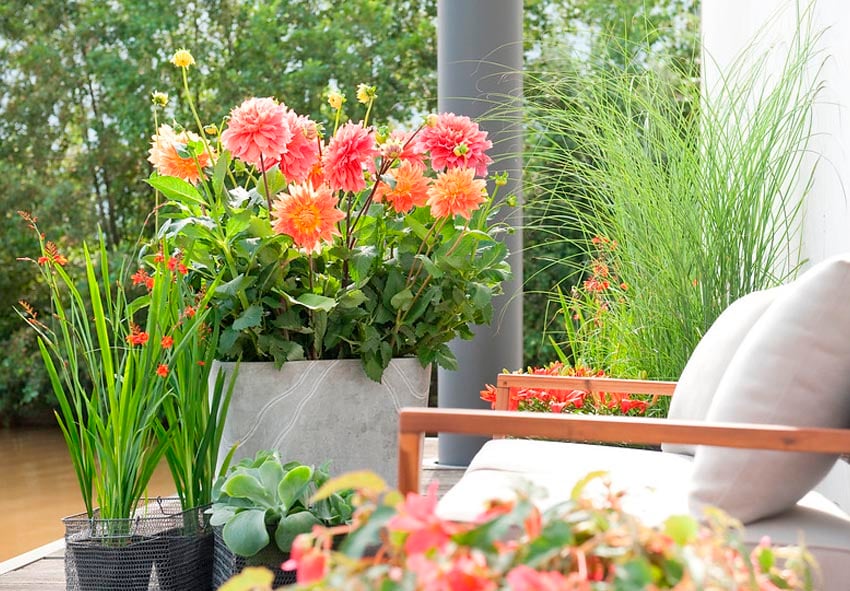
There are various types of containers that are suitable for growing dahlias. Some of these are listed below.
- Ceramic or Plastic Pots: These pots are lightweight and easy to move. They come in a variety of shapes, sizes, and colours and have drainage holes to ensure good drainage.
- Hanging Baskets: These baskets are a creative way to display dahlias and provide excellent drainage. They are available in different materials such as wire, plastic, or natural fibres like coco coir.
- Fabric Grows Bags: These are a more recent option that can be space-saving and lightweight, and they allow for good aeration of the soil. They can also be folded for easy storage during the off-season.
- Product Dimensions: The top diameter of the flowerpot is about 11cm, the height is 10.9cm; Color:...
- Well Designed: There are many holes on the bottom and the side giving your plants an ideal growth...
- Durable: Made of lightweight thick-walled polypropylene, our flower nursery pots will easily...
- ❀【High Quality】The main body and pattern of the plant wall bracket are made of high-quality...
- ❀【Exquisite Decoration】 The wall hanging brackets feature the unique nostalgia of vintage iron...
- ❀【Unique Decoration】This exquisite vintage wrought iron wall hanging plants bracket along with...
- 【Sturdy Grow Bags】5 Pack Plant Bags, 3 Gallon (11 L) - 25cm (D) x 22cm (H); they are made of a...
- 【Great Planting Sacks】It allows the roots to extend freely and prevents root circling, produces...
- 【Easy to Move】These plant bags are lightweight and have two good strong handles on the tops that...
2. Size and Depth Requirements
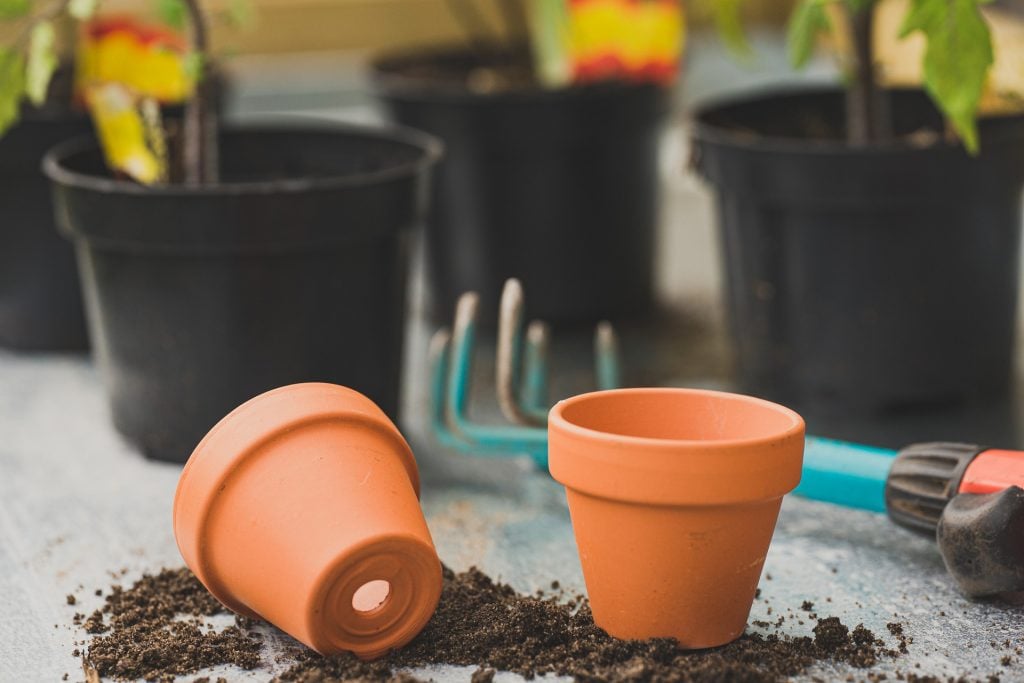
It is important to consider the size and depth requirements when choosing containers for dahlias. Dahlias have large tubers that need space to grow and develop a strong root system. The container size should be based on the size of the plant, which can range from small to tall varieties. Here are some general guidelines for container size and depth.
- Small Dahlias: For small dahlias variety, a container with a diameter of 10 to 12 inches and a depth of 10 to 12 inches is suitable.
- Medium-Sized Dahlias: Containers that are 14 to 18 inches in diameter and depth are suitable for growing medium-sized dahlias.
- Larger Dahlias:Containers or pots having a diameter and depth of 20 to 24 inches are appropriate for larger Dahlias varieties.
3. Material of Containers
When it comes to choosing the right container material for growing dahlias, there are several options available. Here are some of the most common.
- Plastic: Plastic containers are lightweight, affordable, and come in a variety of sizes and colours. They also have good drainage and are easy to move around.
- Wood: Wooden containers such as barrels, half-barrels, or cedar planters are popular options. They provide a natural look, are long-lasting, and are great for larger plants.
- Metal: Metal containers, such as zinc or copper, are durable and provide a modern look. They are also lightweight and easy to move around.
- Ceramic: Ceramic containers are durable, expensive, and come in a variety of colours and styles.
Soil Requirements for Growing Dahlias in Pots
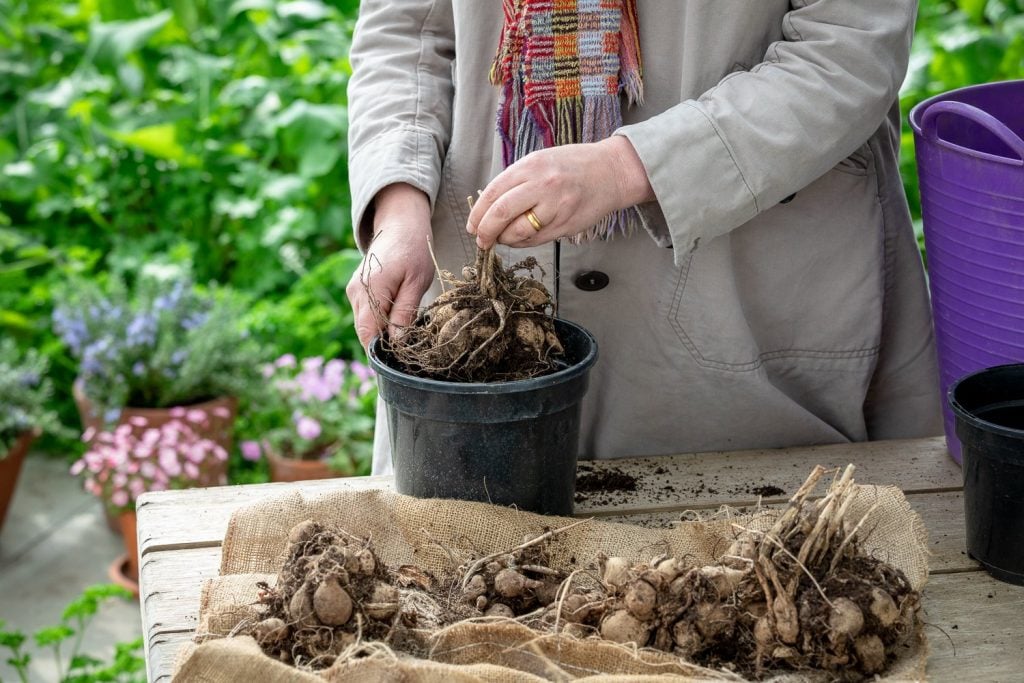
Dahlias require well-draining soil that is rich in organic matter to grow and thrive. The ideal soil for dahlias should be loose and crumbly, allowing for good aeration and drainage. Here are some tips for preparing the right soil for dahlias.
- Soil pH: The pH of the soil should be between 6.0 and 7.0, which is slightly acidic to neutral. If the soil pH is greater than 7.0, you can add sulfur to reduce it.
- Soil Texture: The soil should be a mixture of sand, silt, and clay, with a good amount of organic matter mixed in. You can amend the soil with compost or aged manure to improve its texture and fertility.
- Nutrients: Dahlias require a good supply of nutrients to grow and produce blooms. You can add a slow-release fertilizer to the soil before planting.
- Soil Drainage: Dahlias require well-draining soil to prevent the tubers from rotting. You can add perlite or coarse sand to improve soil drainage.
How To Grow Dahlias In Containers
Dahlias are beautiful flowering plants that can brighten any garden with their vibrant colours and large blooms. If you don’t have a garden or simply want to save space, planting dahlias in containers is a great option. Here are some tips for successfully planting dahlias in containers.
1. Preparing the Container for Planting
First, choose a container that is large enough to accommodate the dahlia tubers and allow them to grow. Ensure the container has drainage holes at the bottom to prevent water from accumulating and causing the roots to rot. Fill the container with well-draining potting soil mixed with compost or organic matter. The soil should be moist but not waterlogged.
2. Step-By-Step Planting Process
- Step 1: Soak the dahlia tubers in water for a few hours before planting to help them absorb moisture.
- Step 2: Half-fill the container with soil.
- Step 3: Place the dahlia tubers on top of the soil with the sprout facing up.
- Step 4: Cover the tubers with 2-3 inches of soil, leaving the sprouts exposed. Water the soil thoroughly to settle it around the tubers.
- Step 5: Place the container in a sunny spot where the dahlia will receive at least 6 hours of sunlight each day.
3. Tips for Ensuring Successful Planting
Some easy tips for a successful dahlia plantation in pots are listed below.
- Choose healthy dahlia tubers that are firm and free of mold or soft spots.
- Plant the tubers when the soil has warmed up to at least 15°C to encourage growth.
- Fertilize the dahlias with a balanced fertilizer once a month during the growing season.
- Deadhead the dahlias regularly to promote more blooms and prevent the plant from going to seed.
How to Care for Dahlias in Containers
After planting dahlias in containers, you need to take proper care of these plants. These include watering them, staking them, pinching and deadheading, and protecting them from pests and diseases. In addition, it is also essential to fertilize dahlias in containers regularly with a balanced fertilizer.
Follow the manufacturer’s instructions for application. By providing proper care and attention, you can enjoy healthy and vibrant dahlias in containers all season long.
1. Watering Requirements
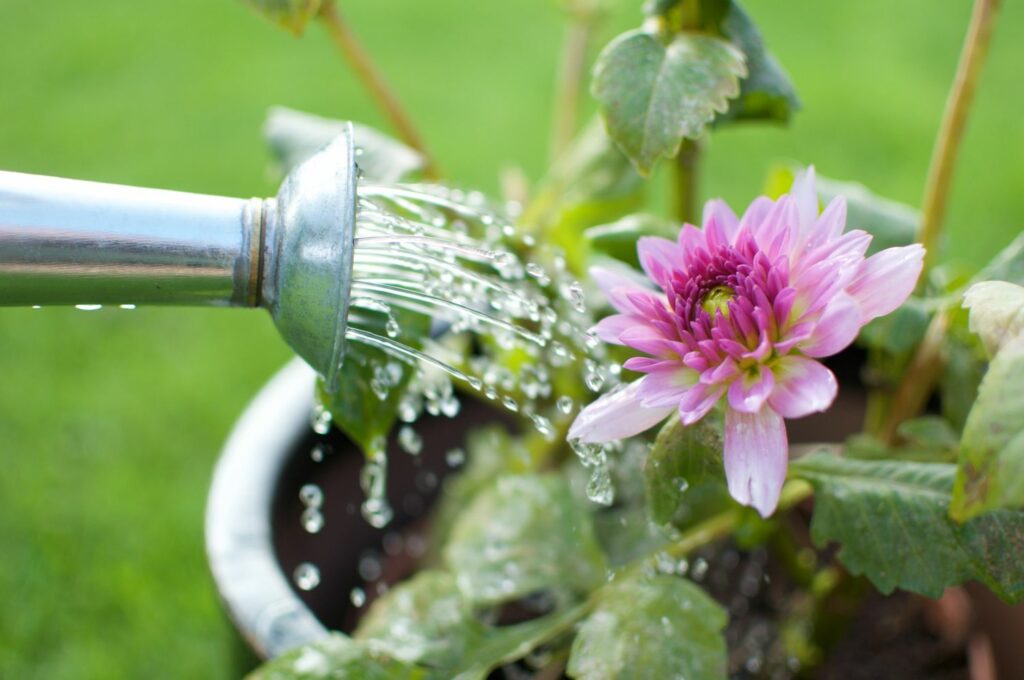
Dahlias require consistent and frequent watering to thrive in containers. Water the container deeply once a week or more frequently if the soil dries out quickly. Avoid overwatering, as this can lead to root rot. Ensure that the container has proper drainage to prevent waterlogging.
2. Staking and Supporting Dahlias
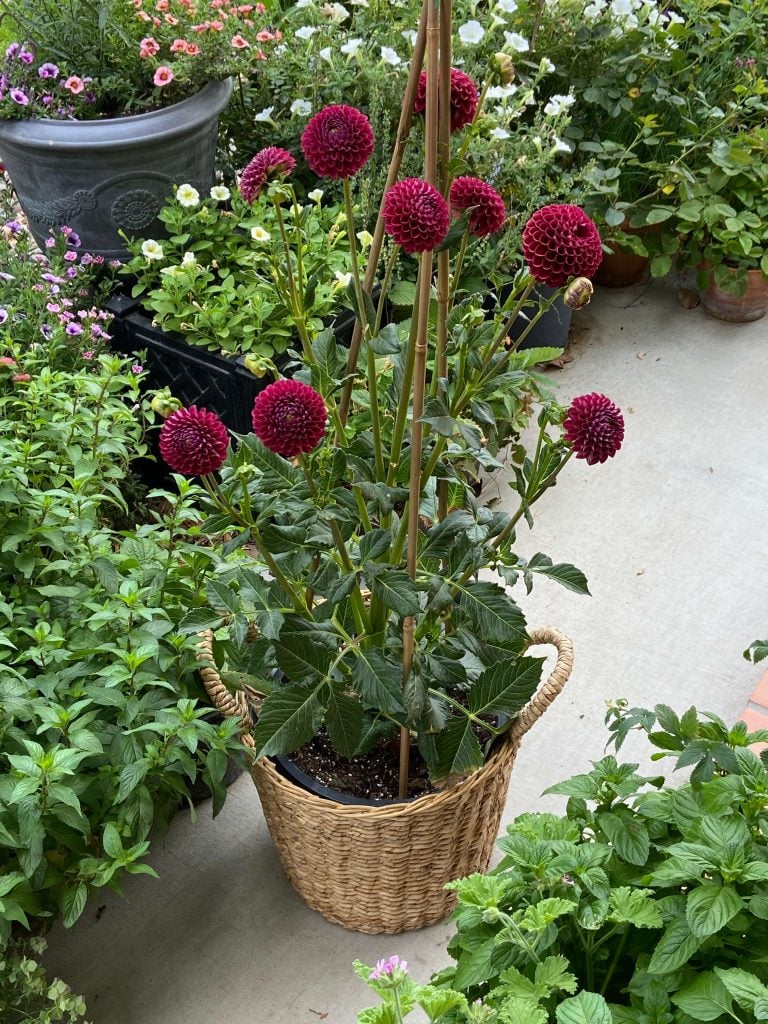
Dahlias have a tendency to become top-heavy and require support to prevent them from falling over. Use stakes to provide support for the plants. Place the stakes in the container before planting the dahlia tubers to avoid damaging the roots later. However, dahlias under 2 feet do not require a stake or support.
3. Pinching and Deadheading Dahlias
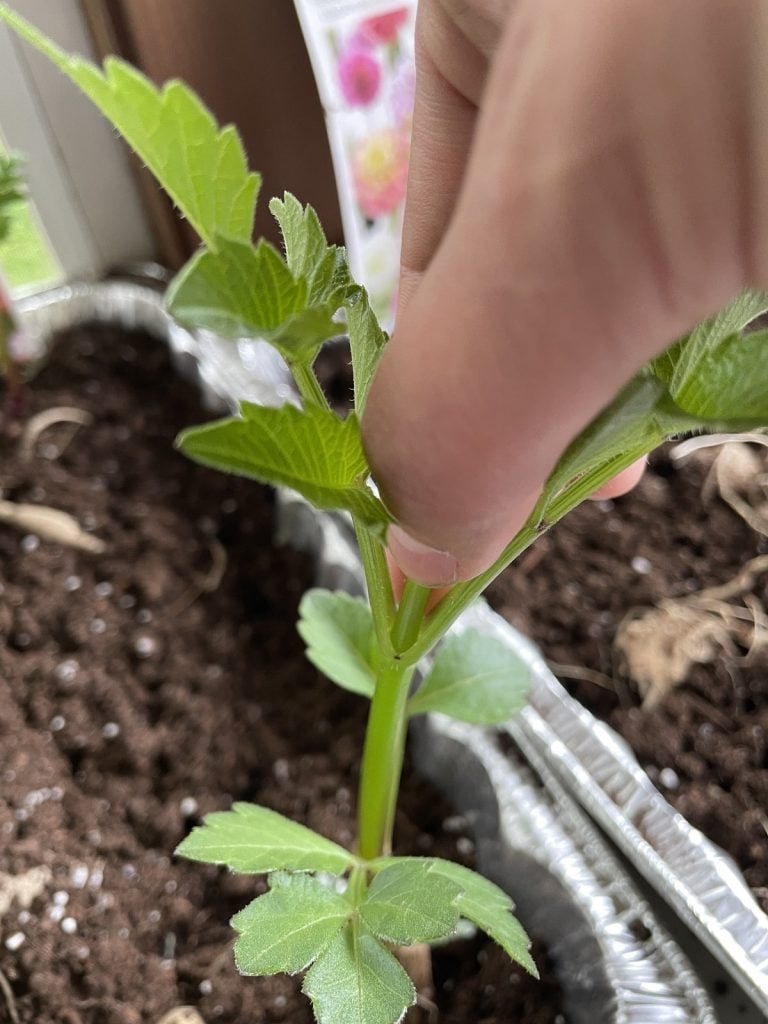
To encourage bushy growth and more blooms, pinch off the top of the main stem when it reaches a height of 12-18 inches. This will promote branching and more flowers. Deadhead spent flowers regularly to encourage the plant to produce more blooms.
4. Protecting Dahlias from Pests and Diseases
Dahlias are susceptible to pests and diseases, which can cause damage and reduce flower production. Pests like spider mites, aphids, and slugs can damage them. Treat pests with insecticidal soap or neem oil. Avoid overhead watering, as this can promote fungal diseases. In case the plant gets infected, prune infected leaves and apply a fungicide to prevent further spread.
- LEAF DISEASES: Controls all major leaf diseases of roses and ornamental plants, such as blackspot,...
- EFFECTIVE FORMULA: Fast acting contact and systemic formula ensures it gets working quickly, whilst...
- SUITABLE FOR: Suitable for use on houseplants, ornamental garden plants, and select edibles
Overwintering Dahlias in Containers
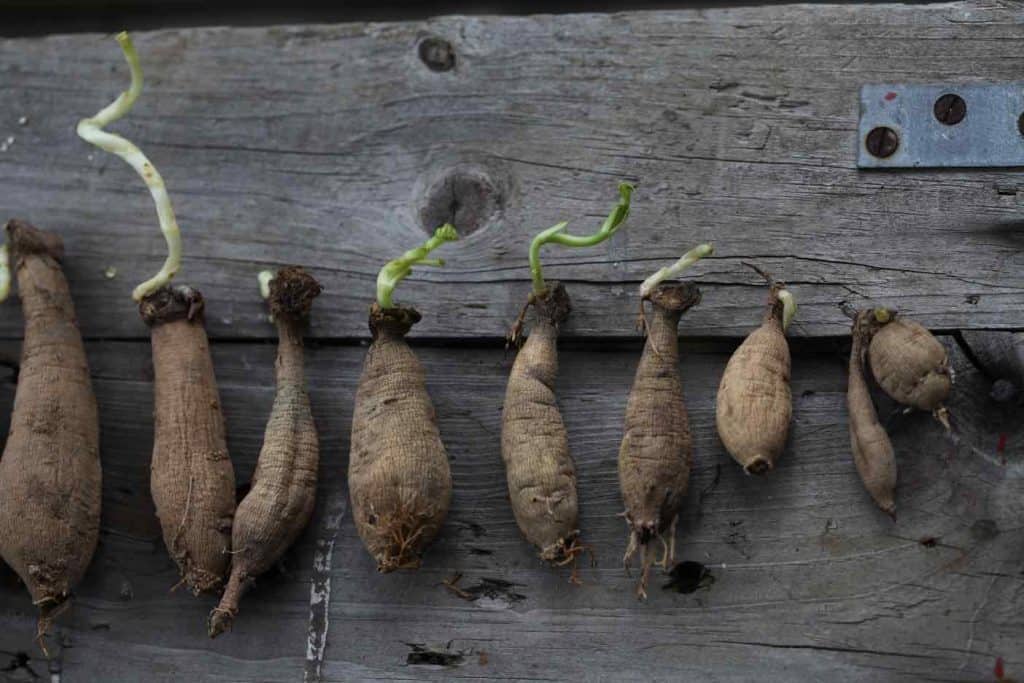
Since Dahlias are susceptible to cold climates, overwintering becomes an important step. Before winter sets in, you must remove dead flowers or foliage from the container. Remove excess soil from the container and move it to an area where the temperature stays above freezing. You must carefully dig up the tubers from the soil and allow them to dry out for a few days. Then place these tubers in a cardboard box and store them in a dry place. In spring, replant these dahlias in fresh potting soil.
Growing Dahlias in Containers: The Stunning Blooms
Growing dahlias in containers is a great way to enjoy these flowers, even if you don’t have a garden. With proper preparation, planting, and maintenance, dahlias can thrive in containers and provide vibrant blooms throughout the growing season. However, it is important to choose a container with proper drainage, use high-quality potting soil, and provide regular watering, fertilizing, and support.
Additionally, pinching and deadheading the plants and protecting them from pests and diseases is essential for their healthy growth. Finally, overwintering dahlias in containers can ensure their survival and longevity. Dahlias come in a wide variety of colours, shapes, and sizes, and they can add elegance to your outdoor as well as indoor space.
As mentioned in this article, dahlias can survive and thrive in containers or pots with the right preparation. So if you are looking for an enjoyable gardening experience, try growing dahlias in containers.
Frequently Asked Questions (FAQs)
Do Dahlias Like Sun or Shade?
Dahlias generally prefer full sun, meaning they need at least 6 to 8 hours of direct sunlight daily. However, they may benefit from some shade in hot climates to prevent the plants from wilting. So, it’s best to provide them with ample sunlight while also protecting them from extreme heat or intense sunlight.
What is the Best Fertiliser for Dahlias?
The best fertilizer for dahlias is one that is balanced, meaning it contains equal amounts of nitrogen, phosphorus, and potassium. Organic fertilizers such as compost, worm castings, or fish emulsion are also beneficial for dahlias and can help improve soil health over time.
Do Dahlias Need a Lot of Water?
Dahlias require regular watering, but they don’t like being in soil that is too wet or dry. In general, dahlias need about an inch of water per week, either from rainfall or irrigation. However, the amount of water required may vary depending on factors such as temperature, humidity, and soil type.
Is Manure Good for Dahlias?
Yes, manure can be good for dahlias as it is a rich source of organic matter and nutrients such as nitrogen, phosphorus, and potassium. In addition, adding well-aged manure to the soil before planting can help improve soil fertility, which can lead to healthier plants and better blooms.





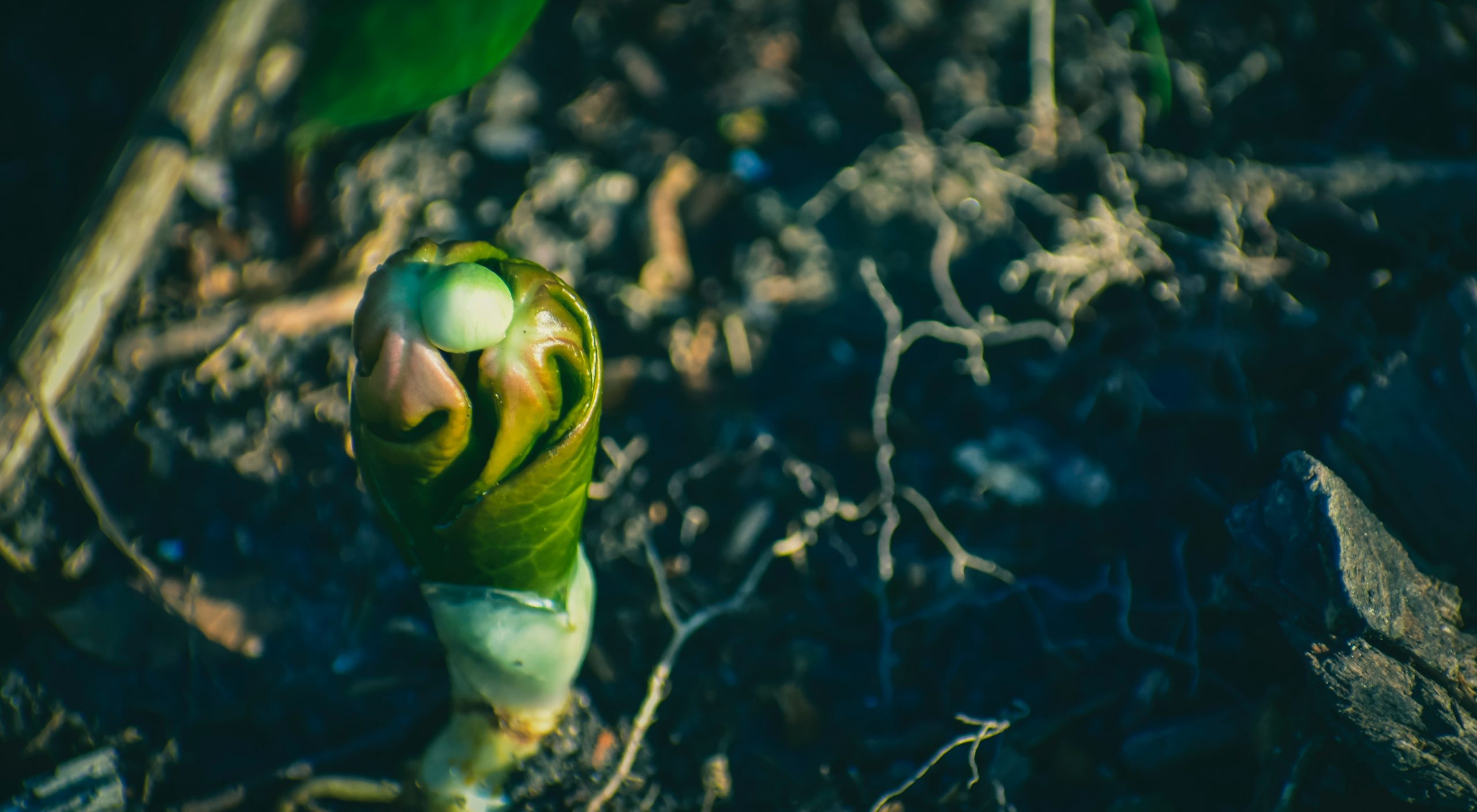
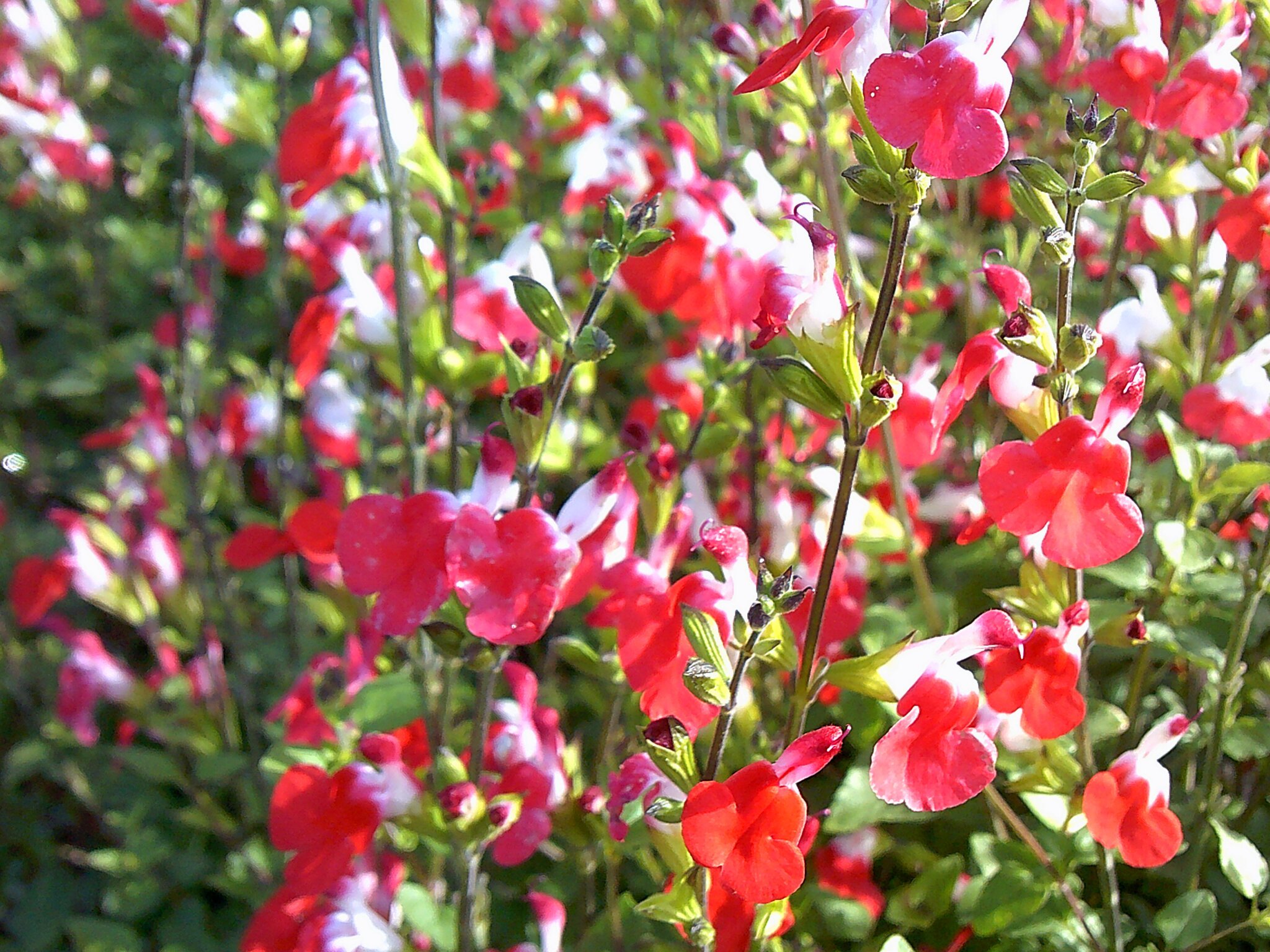
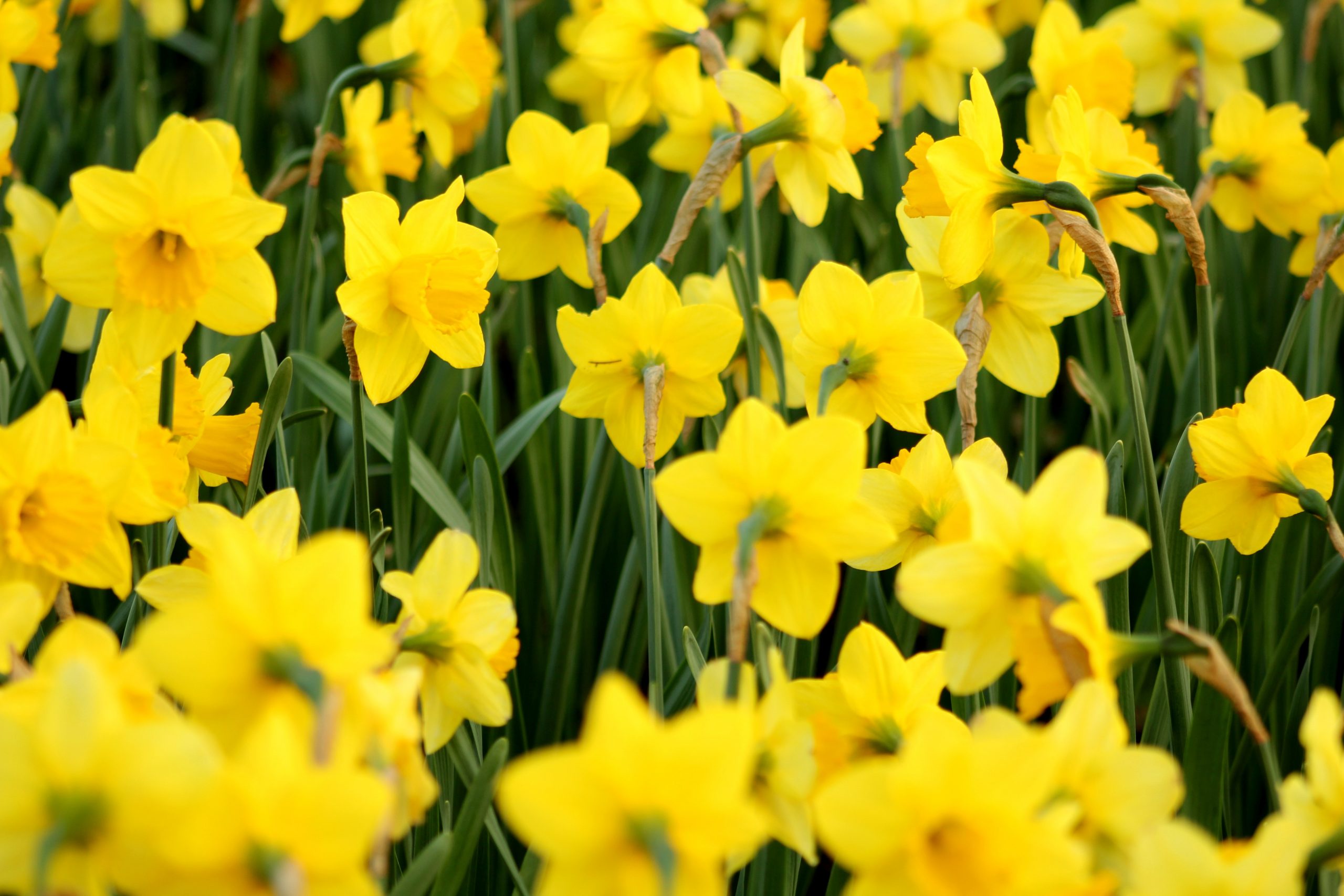
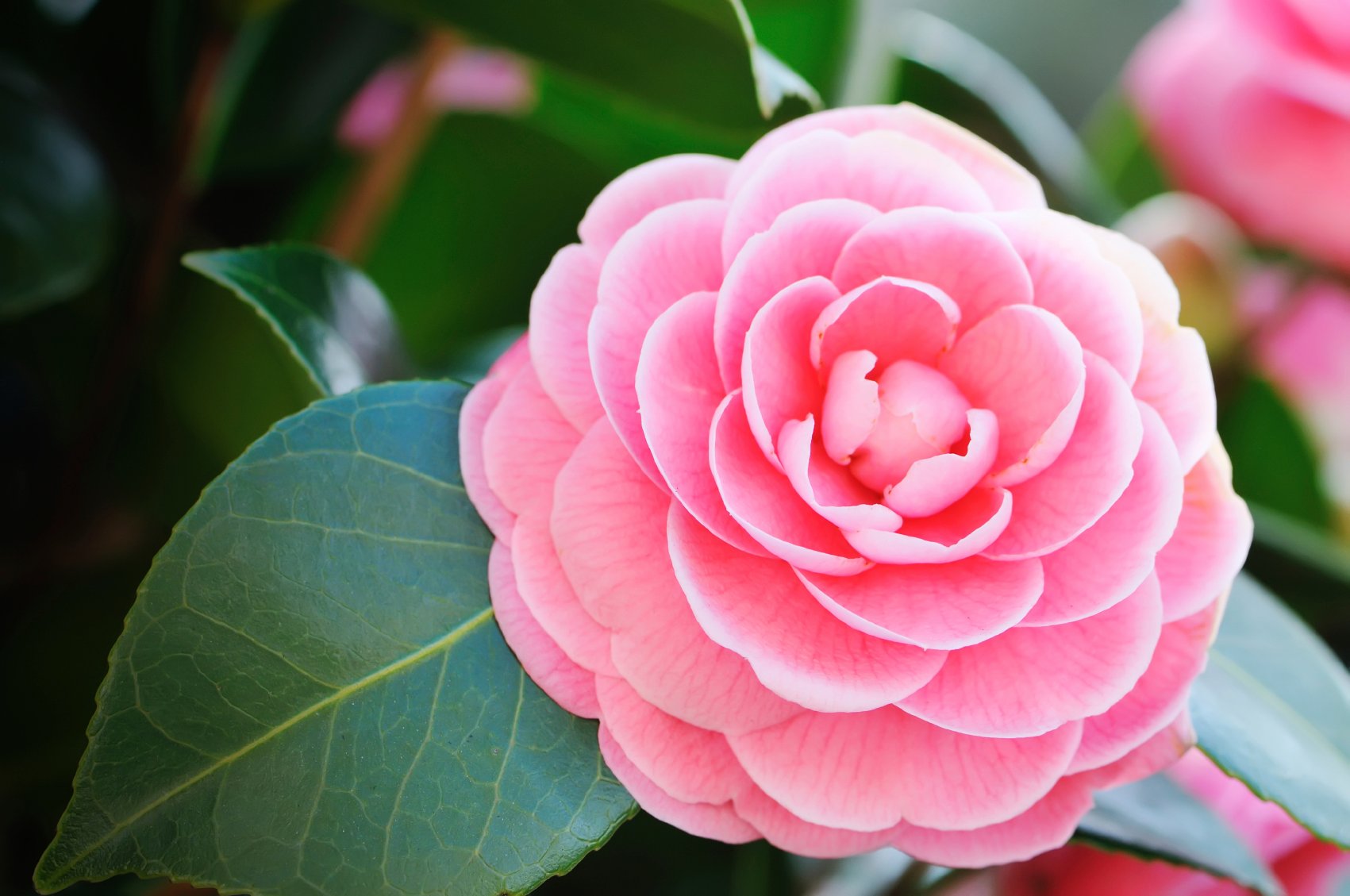
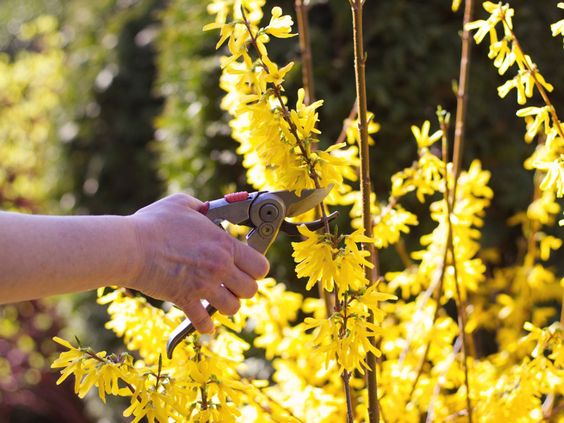
![When and How to Plant/Sow Marigold Seeds [UK]](https://www.thearches.co.uk/wp-content/uploads/Sowing-Tagetes-Marigolds.jpeg)
Great info! What do I do about water when putting dahlias in pots in my shed?
Thanks,
Jill